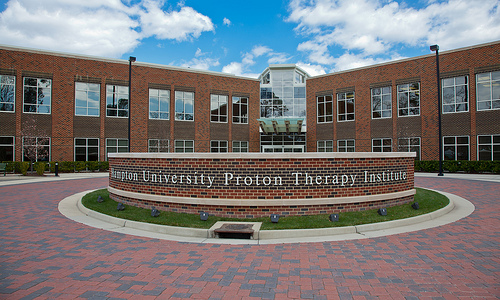Though proton therapy may seem relatively new, the idea of utilizing energetic protons as a treatment for cancer was first published by scientist Robert R. Wilson in 1946. Early treatments were performed at nuclear physics facilities, such as the Harvard Cyclotron Laboratory, and eventually gave way to the first hospital-based proton therapy center in 1990. Since then, almost a dozen of these proton cancer treatment centers have been established in the United States. Hampton University Proton Therapy Institute (HUPTI) was the eighth center to rise to prominence, and has evolved to become the largest facility of its kind in the world.
Registration is closed for the event requested
We are experiencing intermittent issues with the integration between vTools.Events and vTools.eNotice.
If you experience issues with a vTools.eNotice mailing that originates from vTools.Events, please contact staff for assistance.
If you experience issues with a vTools.eNotice mailing that originates from vTools.Events, please contact staff for assistance.
Engineering and Science Behind the Hampton University Proton Therapy Institute

Date and Time
Location
Hosts
Registration
Speakers
 Dr. Vahagn Nazaryan
Dr. Vahagn Nazaryan
Topic:
The Hampton University Proton Therapy Institute
The executive director of the Hampton Proton Therapy Intitute gives an overview about the science and engineering involved in radiation treatment at the facility.
Biography:
Vahagn Nazaryan, Ph.D., Executive Director
Dr. Vahagn Nazaryan oversees all clinical and operational aspects of the institute, including physics, dosimetry, radiation therapy, clinic services, HUPTI technology service and maintenance, and research at the institute. Previously, Nazaryan has been a key physicist in the successful opening and operation of the institute, a medical physics research supervisor and assistant professor at HU. Nazaryan has also served four years in administration for ProTom International, a cutting edge proton therapy delivery system manufacturer, most recently the senior vice president of physics and technology. Nazaryan is involved in several research projects that seek to improve the effectiveness of proton therapy and has served as co-PI on several research grants with over a dozen research publications to his credit. He coauthors two patents in radiation therapy delivery methods. Nazaryan received a Ph.D. in Particle Physics from The College of William and Mary, and an M.S. in Physics from Yerevan State University in Armenia.
Agenda
6 - 6:30 Networking
6:30 - 7:15 Presentation/Dinner
7:15 - 8 Facility Tour

 Add Event to Calendar
Add Event to Calendar